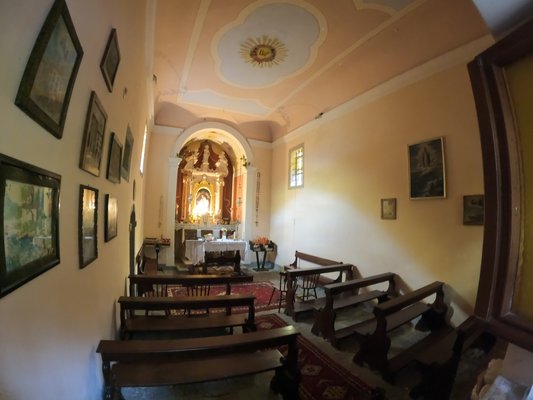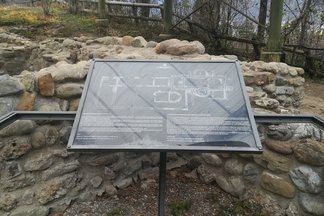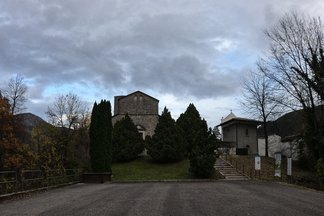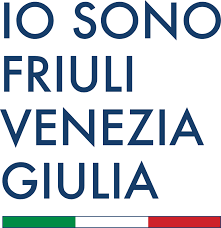The church of Our Lady of the Bridge has a porch with steps; it is normally closed. On the door hangs a sheet that tells the history of the place. What is written in the paper is reported in the description. Under the portico is a seating area.

THE MADONNA OF THE BRIDGE
The little churches that we find scattered here and there among the meadows and woods of Carnia, have mostly votive origins: that is, they arose to ask for help from Our Lady or some saint in case of danger, illness, calamity or as an expression of gratitude for some grace received.
Invillino's older grandparents recount that when the Tagliamento was a water-rich and rushing river, tree trunks cut in the forests of upper Carnia were thrown into its waters and transported in this way to Latisana. Experienced men of the trade would accompany them along the route, on rafts, to check that they did not get stranded and that all the material reached its destination intact.
Well, right near delta Madonna del Ponte, the river formed a very dangerous vortex in which often lost their lives the poor "ciatars," i.e., raftsmen loggers.
To get help and protection from the Virgin, a small chapel was built, and, as the story goes, from then on there were no more deaths in this stretch of the river.
Because of this, the beautiful image of Our Lady of the Bridge was considered miraculous and always attracted devotees from all surrounding towns. Net 1834 the present small church was built adjacent to the small chapel converted into a sacristy.
Even in our days, as in the past, many people come to pray in this
little church to ask for graces and help from our Heavenly Mother. The many small pictures that used to hang on the walls (the votive offerings) tell us how often these prayers were not in vain and how the loving heart of the Mother who left us Jesus was always attentive and open to the needs of all her children. The image of Our Lady now placed on the altar is just a photograph.
The original 1700 painting (and this may perhaps indicate to us the time of construction of the primitive chapel) was stolen on the night of September 19-20, 2000, along with three votive offerings and two candelabra.





